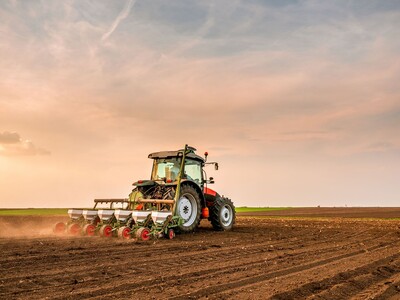Vertical Wind
Vertical Wind. I’m Greg Martin as Line On Agriculture presents the Harvest Clean Energy Report.
Wind turbines up until now have been these massive structures that many people find unappealing. But now that is changing according to Chris Hendricks, managing member of ALM Composites.
HENDRICKS: Our business has been to develop and now successfully test what is called a vertical axis wind turbine. This type of turbine, or at least our type of turbine - if you take 3 of our blades and stack them vertically they’re only 40 feet high and they can generate 10 kilowatts of electricity so it’s a compact, friendly. You know a lot of people are concerned about heights and noise with the large turbines.
Hendricks says there are some definite upsides to the vertical wind turbines.
HENDRICKS: This is something that doesn’t need to go through an extensive review. It can be placed in modified versions on top of schools, next to libraries. We have a customer in Nevada interested in using them for irrigation pumps because of the cost of bringing electricity and meters out to the various pumps.
One of the great features for the new turbines is that they don’t require a grid.
HENDRICKS: In other words those large turbines often require federal money and some process to transmit that heavy electricity via transmission lines while our turbines can tie into a distribution line that’s probably running to any home or farm in the state.
That opens up the possibilities for wind energy to pretty much anyone. Henricks says it’s all due to new materials that stemmed from the boating industry.
HENDRICKS: One of the things that makes this turbine so inexpensive to manufacture and sell and easy to set up is it’s made out of a proprietary, high tech composite that is a resin glass mixture.
Finally the wind generation industry is opening up to the more common user.
HENDRICKS: We think that large land owners, let’s say people who are converting brown fields or farmers or perhaps a residential community that has a bunch of property owners that it can also be efficient on a large local scale sometimes referred to as a community wind project.
For additional information on clean energy, visit harvestcleanenergy.org. That’s today’s Line On Agriculture. I’m Greg Martin on the Ag Information Network.???www.harvestcleanenergy.org

















